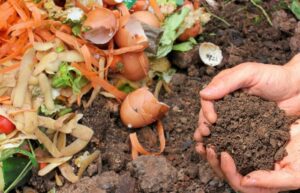Environmental management has become a crucial part of operating a business, and an integral component under this umbrella is waste management.
No longer can a business discard all their waste into a ‘general waste’ bin, you need to have a plan for all waste streams, from solid waste recyclables to food and organic waste. Waste management for every business will look different, there is no one size fits all waste management strategy. A great waste management strategy is specifically adapted to a business’s operations, geographical footprint, supply chain and waste types. When informed by a waste situation analysis, a good waste management strategy will help you comply with waste regulations, reduce landfill disposal volumes, and create circular systems with different waste streams. Having worked closely with the retail and food sector, director of BiobiN South Africa, Brian Küsel, talks about the essential components of a waste management strategy for retail: Doing a waste analysis to inform your strategy “The first stage of drafting a waste management strategy is to understand the big picture fully, what types of waste are generated, at what volumes, and where,” says Küsel. “Food production is also seasonal therefore; it is important to consider that organic waste by-products will increase in volumes during retail busy times. This means that your organic waste processing systems need to have an increased capacity to handle more waste during this time.” With a comprehensive understanding of your company’s waste generation, drafting the waste management strategy is the next step. Setting waste management targets and implementing a measurement system “Setting waste management targets establishes a way to monitor your business’s waste management performance,” says Küsel. “Your waste targets should be aimed at reducing landfill volumes, increasing the rates of recyclable streams, increasing the percentage of waste repurposed, and reducing the hazardous stream. In addition, targets should be business operations specific and clearly measurable through a data capture and processing system.”“For food and organic waste, for example, we can measure how much is placed in our enclosed composting units and what the output compost volumes are, essentially adding to the percentage of waste that is repurposed,” says Küsel.
“Another great approach to setting waste targets is to align your reduction targets with the national waste management goals. For example, implementing a 50% organic waste landfill diversion in line with the Western Cape’s goal of a 50% diversion in 2022. Or, perhaps a more international approach, by halving your food waste by 2030 in line with Sustainable Development Goal 12.3, known as the food waste index,” adds Küsel. Ensuring waste management compliance through monitoring and reporting “A crucial part of any waste management strategy is clarifying the legal requirements of managing different waste streams. In most instances, waste types need to be kept separate, and an inventory should be kept. Hazardous waste needs to follow specific containment protocols depending on its type,” says Küsel. “With monitoring for compliance, it is also important to assign roles with personnel to keep track of waste data and maintaining the inventory.” “With BiobiN, every time a volume of organic waste is put into the unit, it is recorded, and we can monitor this conversion into the volumes of compost as the output resource.” Identifying circular systems and on-site composting opportunities “While waste management compliance is important, the waste sector has shifted its focus to the circular economy. Attention is not only on solid waste recyclables but also food and organic waste circularity,” says Küsel. “On-site composting technology and other waste repurposing systems have improved significantly in recent years, and with an increased consumer awareness on the impact of waste and tightening regulations, there will be greater expectations placed on businesses to create a circular system with waste.” Conducting annual reviews and revised targets “What were the volumes of organic waste generated this year versus last year, what is the percentage difference, and how far are you from your target? This is what your reviews should be looking at,” says Küsel. “We often find that our clients, through the use of BiobiN, meet their organic waste targets, which often presents the opportunity to set more ambitions targets for the next year.”






